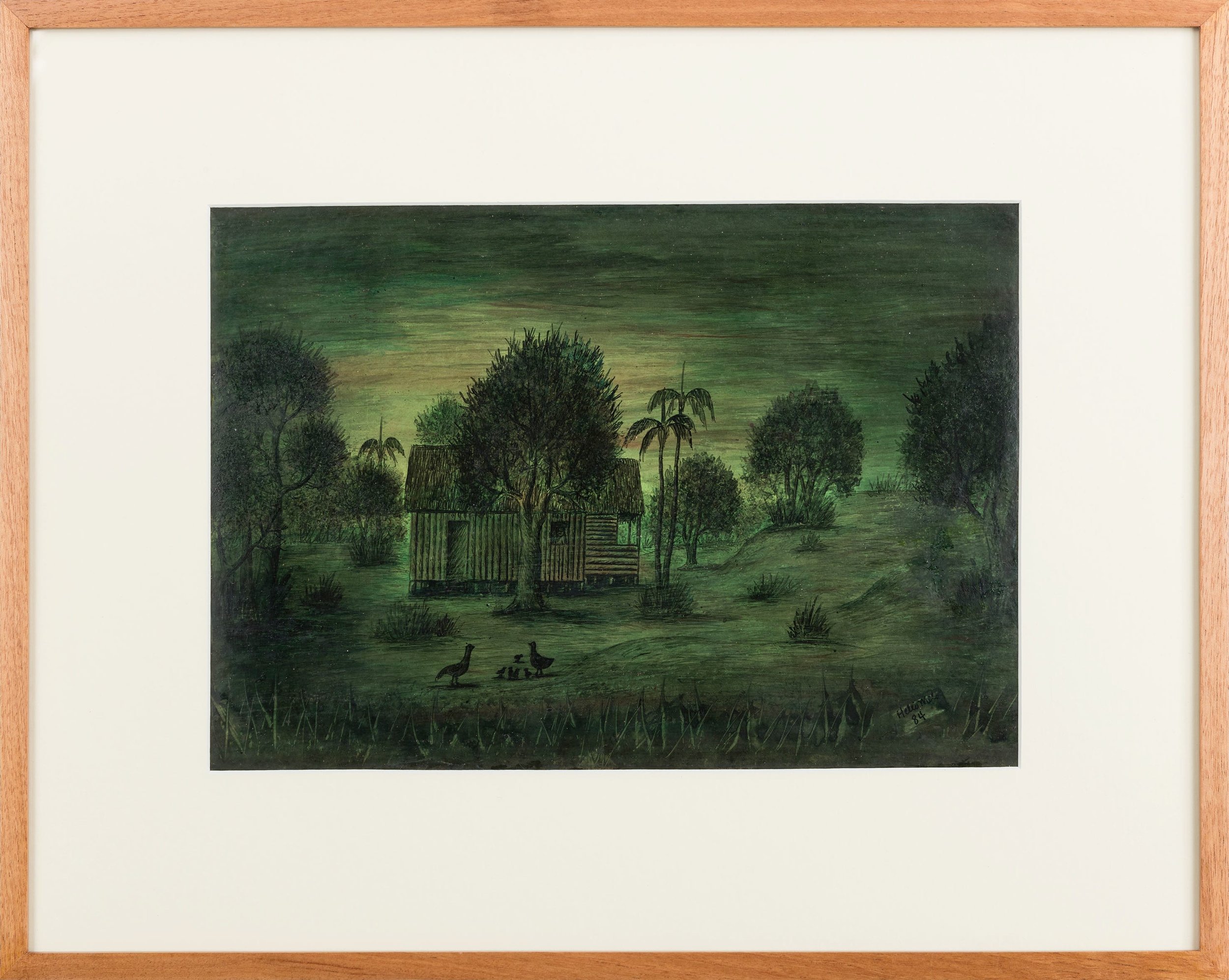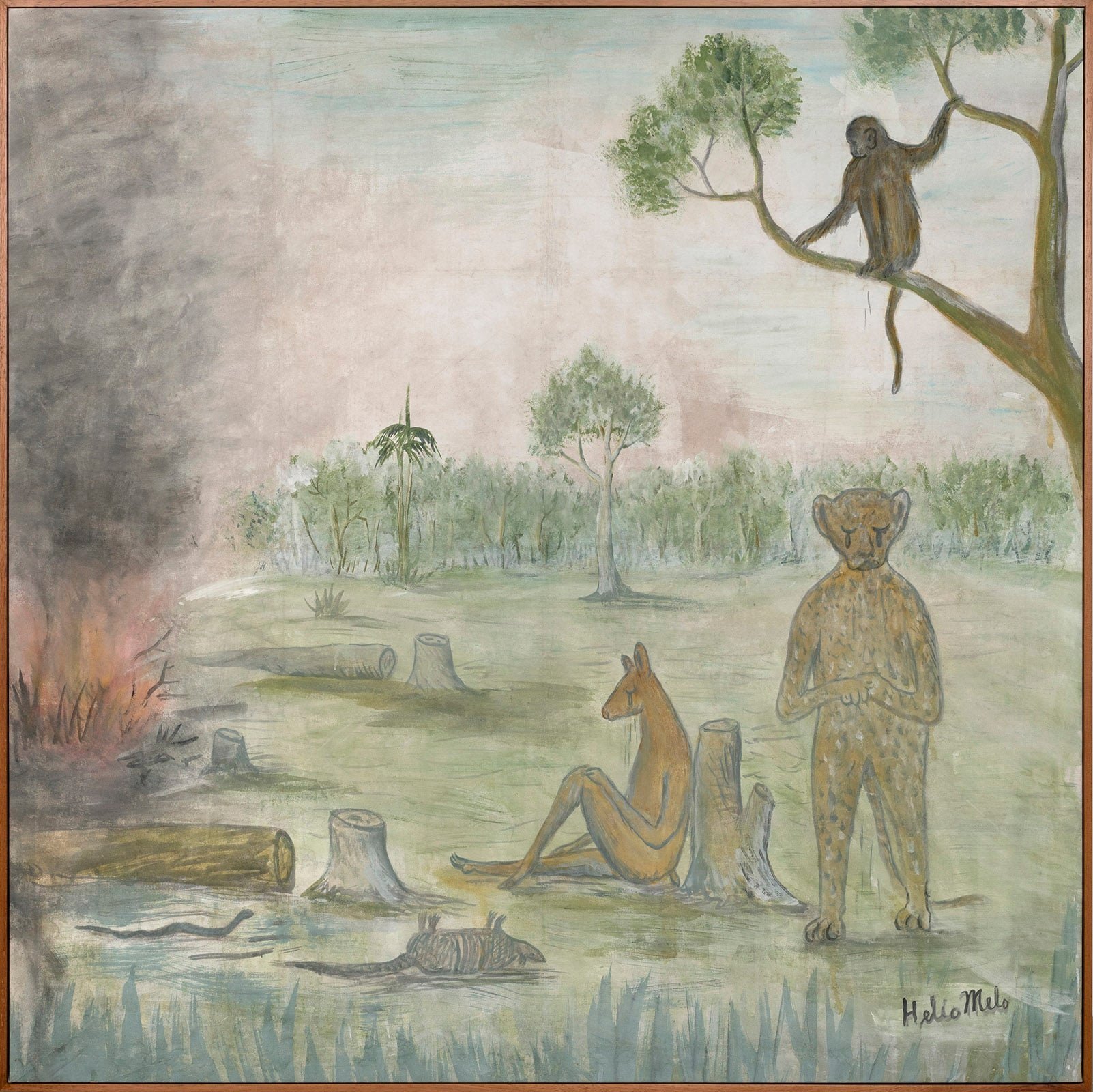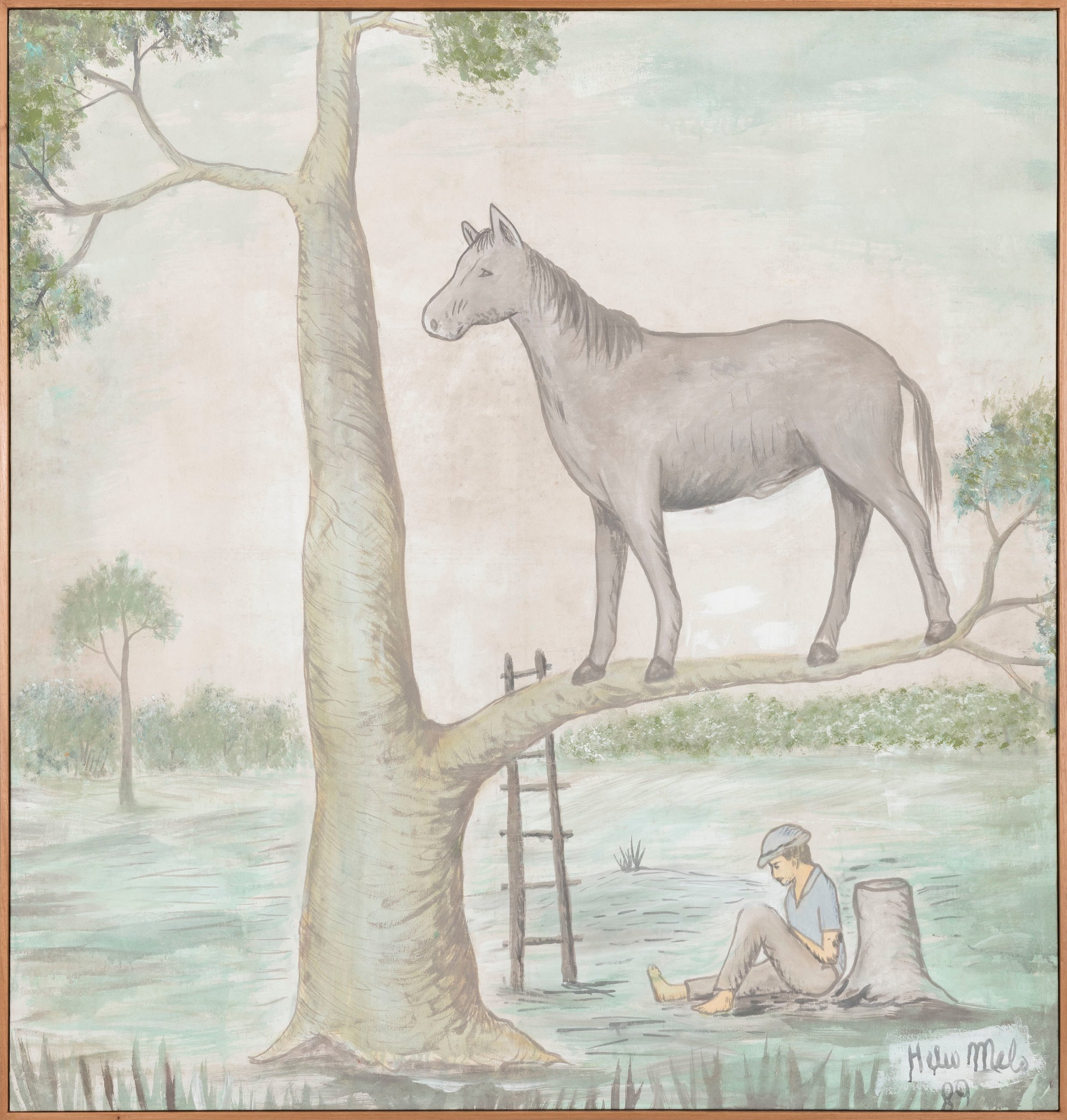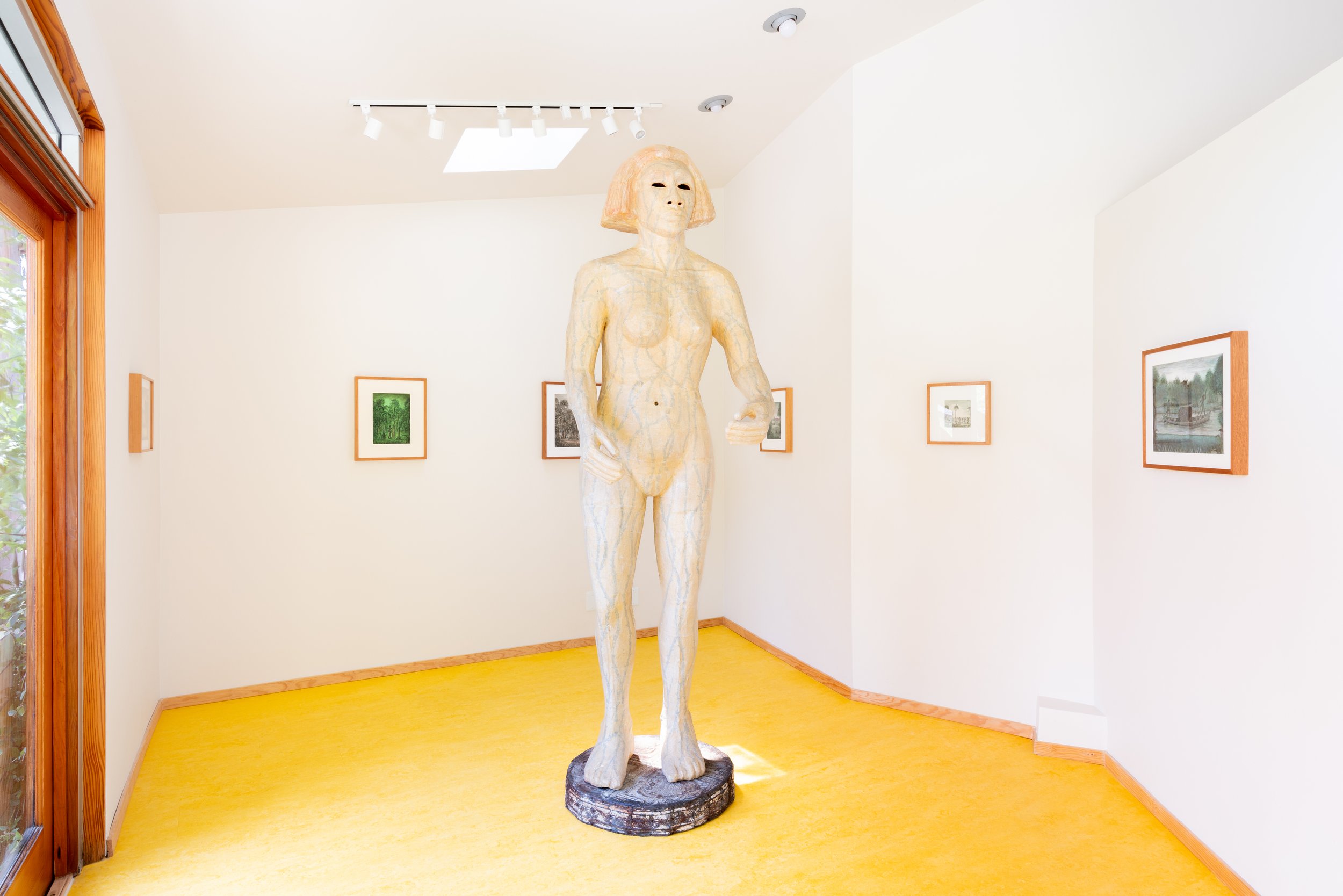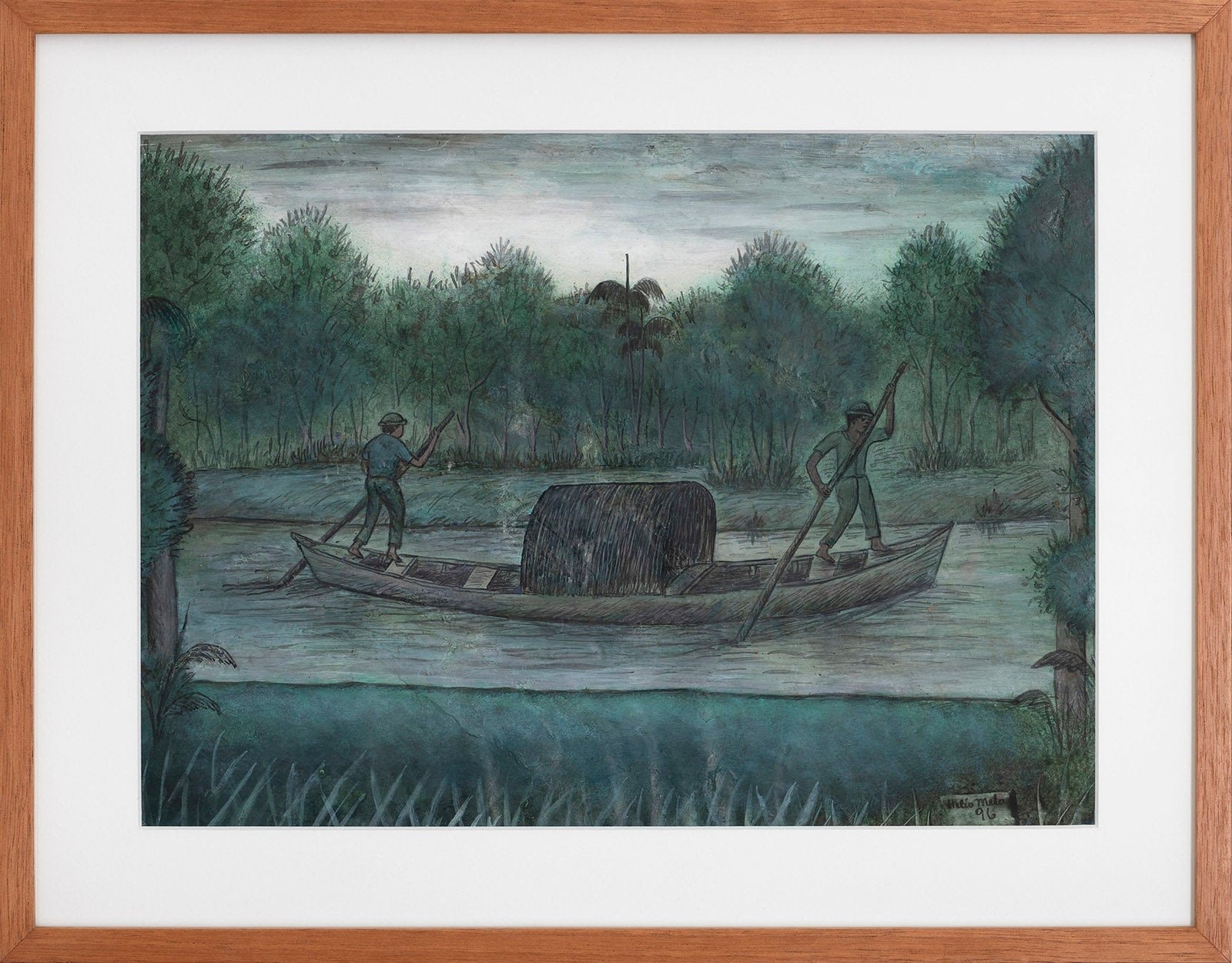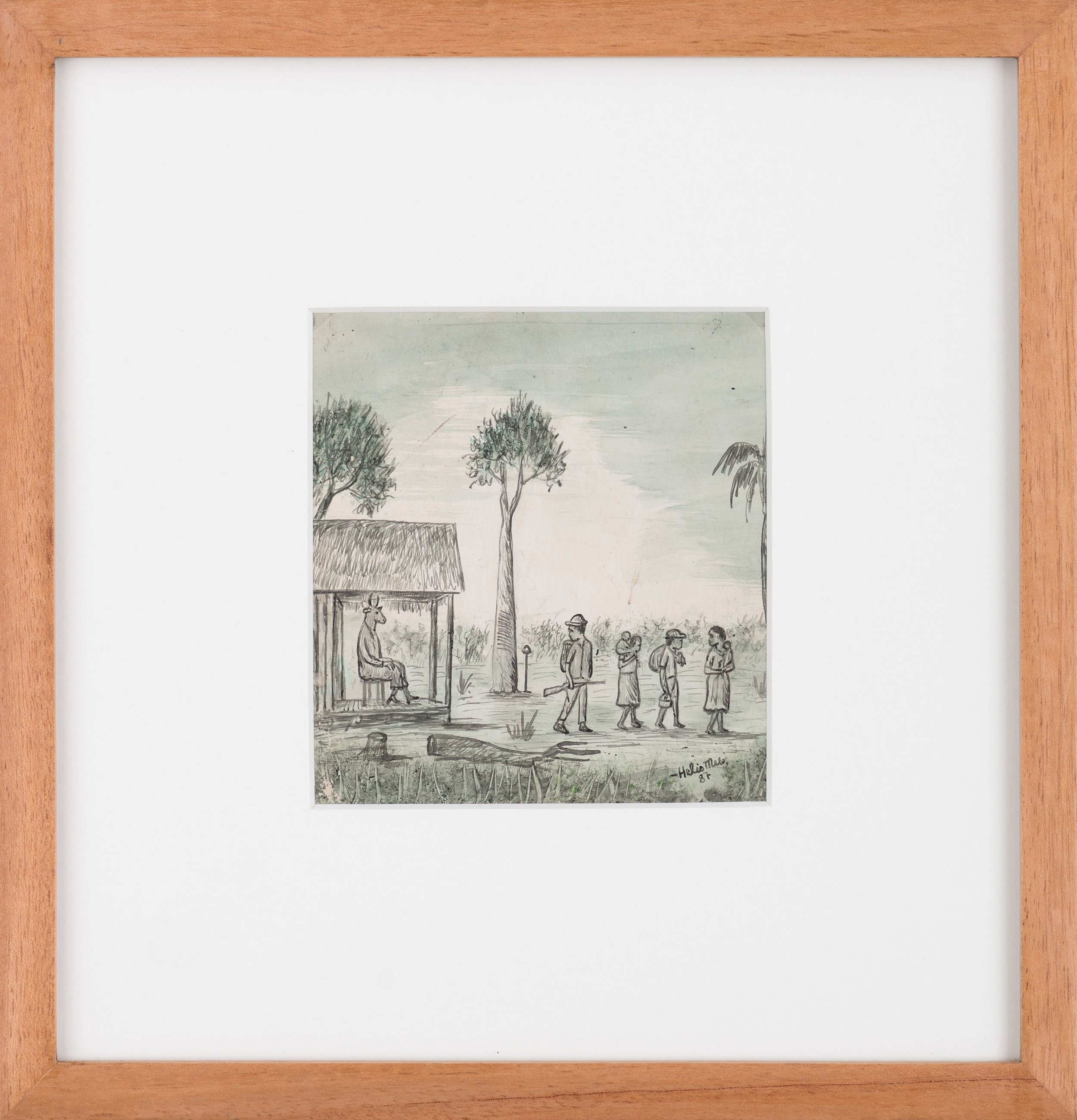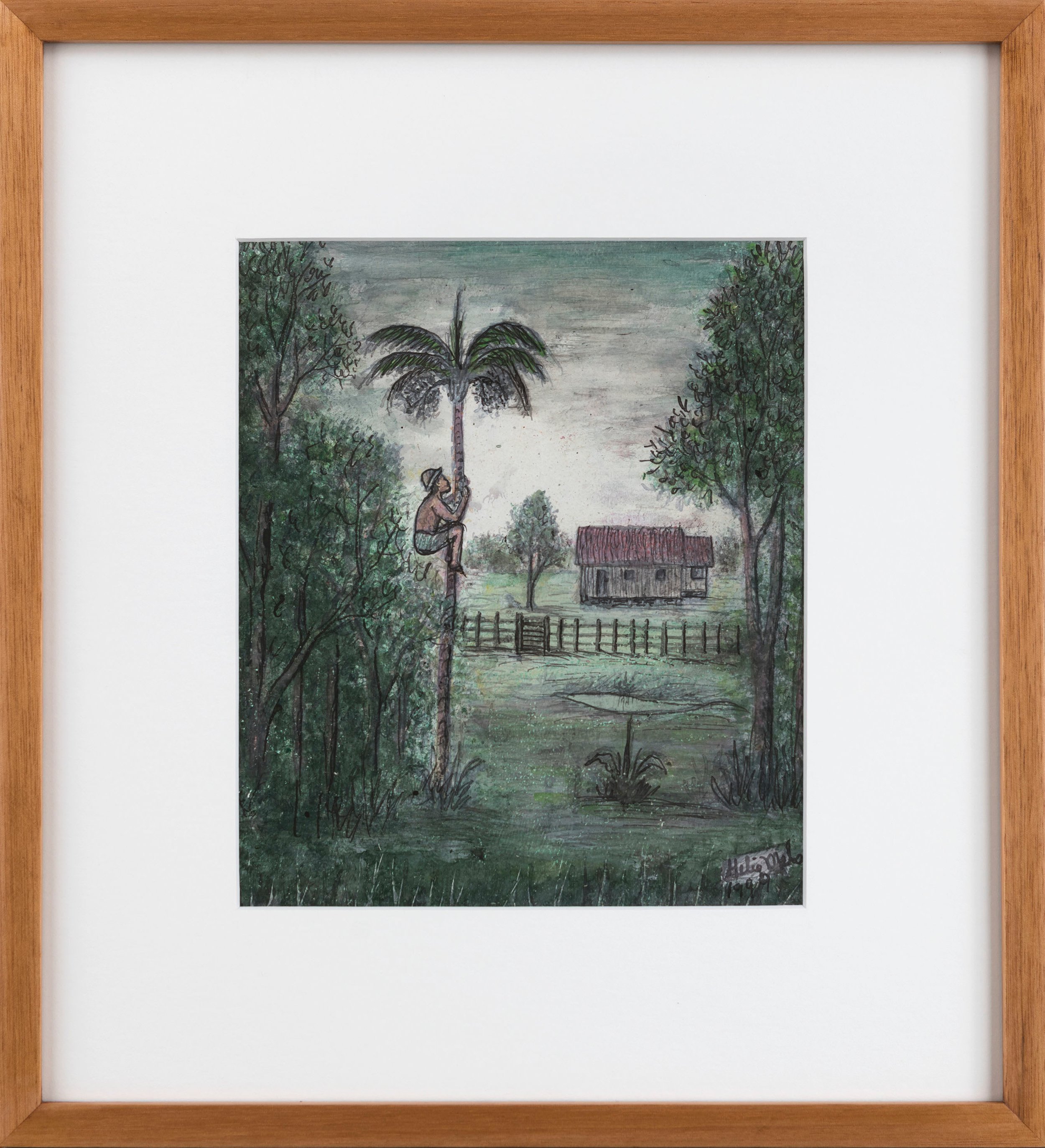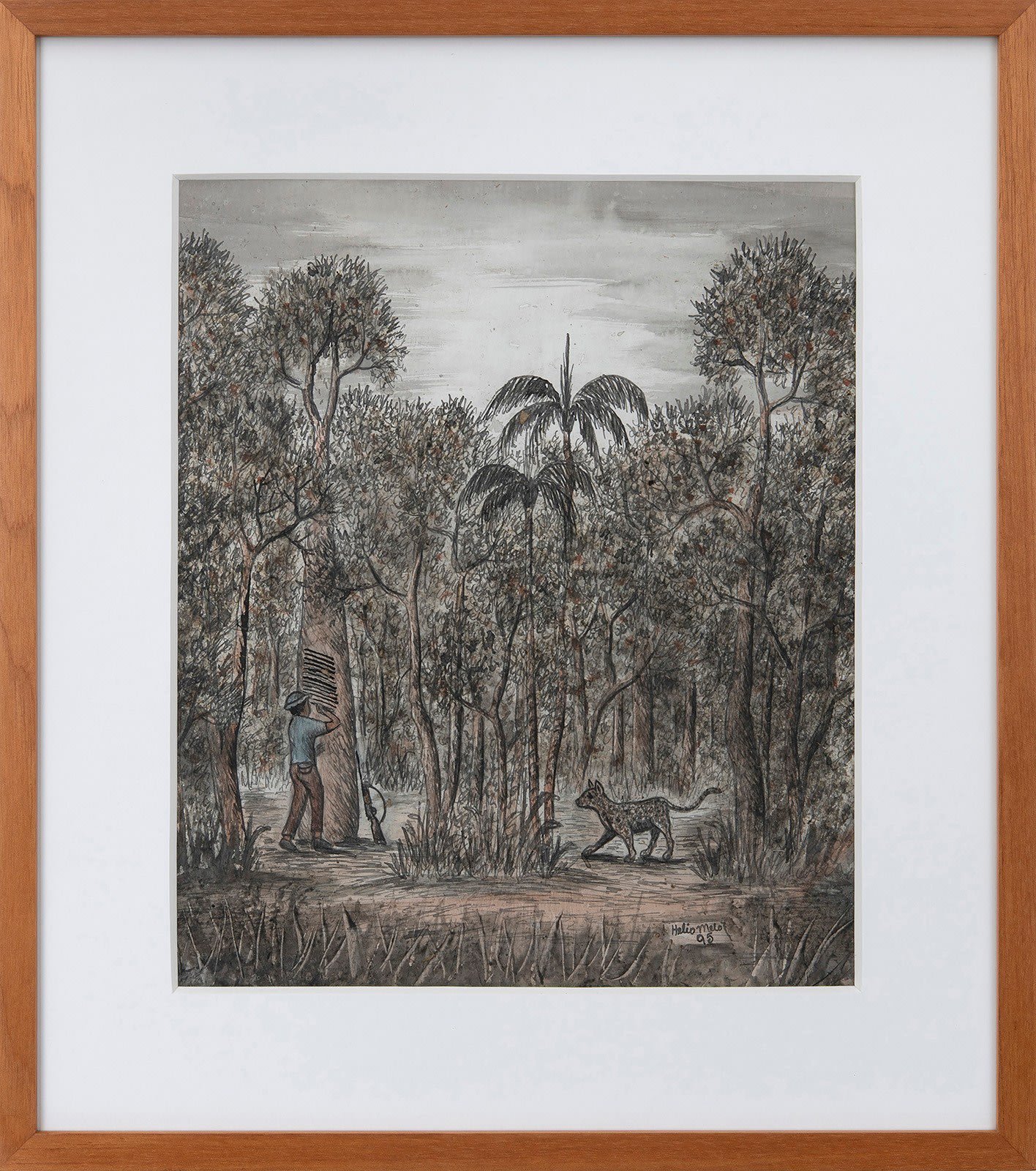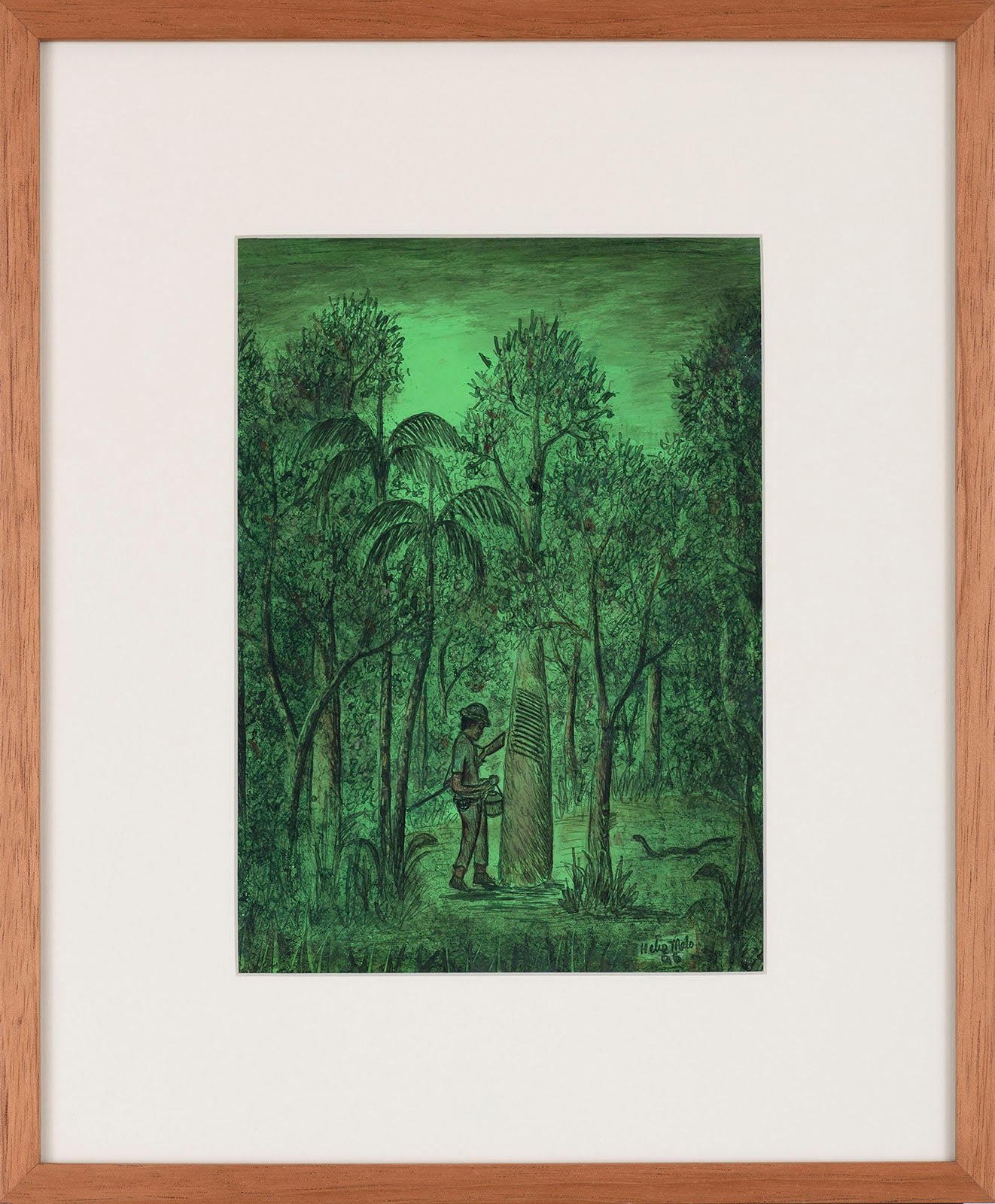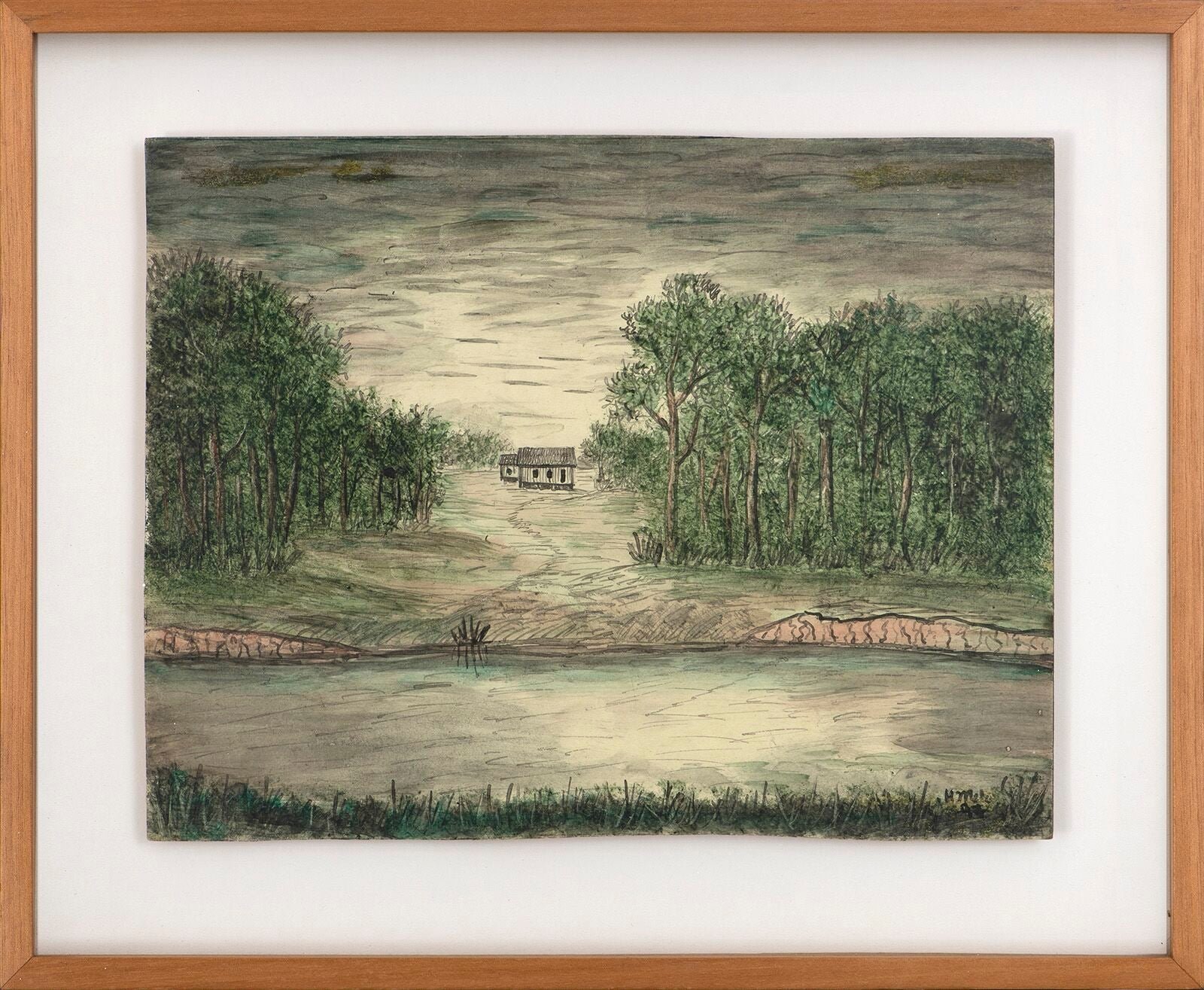Hélio Melo & Alison Saar
In collaboration with Almeida & Dale
June 24 – August 12, 2023
Installation image of Alison Saar "En-Pointe" 2010 wood, bronze, graphite and rope 90 x 48 x 30 inches
Hélio Melo "Untitled," 1984 ink and leaves' extract on cardboard 11 3/4 x 16 7/8 inches
Hélio Melo "A chegada do Palhaço Rufino no Seringal," 1994 ink and leaves' extract on canvas 39 3/4 x 46 1/2 inches
Detail image of Alison Saar "En-Pointe," 2010
Alison Saar "Sea of Nectar," 2008 bronze and paint 22 x 7 x 8 inches
Hélio Melo "O pranto dos animais II," 1989 ink and leaves' extract on fabric 55 3/4 x 55 3/4 inches
Hélio Melo "Navio ou gaiola," 1997 ink and leaves' extract on paper 8 5/8 x 14 1/8 inches
Hélio Melo "Untitled," 1989 ink and leaves' extract on fabric 55 3/4 x 56 7/8 inches
Hélio Melo "Untitled" 1989 ink and leaves' extract on fabric 56 1/4 x 54 3/8 inches
Alison Saar "Nocturne," 2023 acrylic and charcoal on found seed sacks 26 1/2 x 35 inches
Installation image of Alison Saar "Thistle and Twitch (Mombie)," 2013 paper, glue, acrylics, copper, and found brambles 96 x 24 x 16 inches
Hélio Melo "Barco à varejão," 1996 ink and leaves' extract on paper 12 x 16 3/8 inches
Hélio Melo "Caminho sem destino I," 1987 ink and leaves' extract on paper 5 1/8 x 4 3/4 inches
Hélio Melo "Untitled," 1999 ink and leaves' extract on cardboard 9 1/4 x 7 7/8 inches
Hélio Melo "Cortando seringa," 1995 ink and leaves' extract on cardboard 13 1/4 x 11 1/4 inches
Hélio Melo "Cortando seringa," 1996 ink and leaves' extract on paper 11 x 7 7/8 inches
Hélio Melo "Riacho," 1997 ink and leaves' extract on cardboard 8 3/8 x 11 1/8 inches
SEA VIEW and Almeida & Dale are pleased to present a pairing of historic paintings by the late self-taught Brazilian artist Hélio Melo (b. 1926–2001, Acre, Brazil) and contemporary sculptures by Los Angeles based artist Alison Saar (b. 1956, Los Angeles, CA). Although each artist’s works reflect on two very different regions, time periods, and methodologies, both are concerned with recontextualizing historical and mythical narratives, imparting a sense of voice to those whose stories are too often forgotten.
Born and raised in the Amazon, Hélio Melo began to paint in the 1970s, devoting his work to illuminating the forest’s sublime vastness and irreplaceability. As a former rubber tapper (a laborer specializing in the careful extraction of latex through meticulous cuts along the sides of a tree), Melo merged factual daily life with poetic folklore to create unique portrayals of an otherwise obfuscated world behind the forest walls – the colonialist rubber industry, the thousands of Indigenous and other families that comprised the community, and the immense yet vulnerable Amazon. Evoking the animals and beings of ancestral fables, Melo’s tender representations offer a window into past events and possibly a premonition for the future. Melo’s subjects highlight the region’s violent social and ecological transformations during Brazil’s military dictatorship between 1964-1985, yet they also more broadly reflect the increasing fragility and instability of our current life web.
Born and raised in Los Angeles to a family of artists in 1956, Alison Saar is a multimedia sculptor and painter who excavates memories and cultural histories of the African diaspora. Saar’s works often incorporate female archetypes and mythologies to convey intersectional, layered portraits of Black womanhood in America. Influenced by non-Western folk art traditions as well as her mother– the renowned assemblage artist and sculptor Betye Saar– Saar approaches sculpture through a rich, tactile vocabulary of natural and salvaged materials. Often resurrected out of hand-carved tree trunks, sharp hammered ceiling tin, and bronze, Saar’s larger-than-life figures seem to be caught mid-transformation. Reflecting on Saar’s own pluralistic identity as a biracial woman, mother, daughter, and artist, the works encompass a wide range of symbolic materials and textures, not only to represent but to preserve matriarchal narratives related to craft, strength, and endurance.
As Louise Bourgeois once said about her own process: “Every day you have to abandon your past or accept it, and then, if you cannot accept it, you become a sculptor.” As artists, both Melo and Saar create metaphorical worlds in which their figures are conduits for real, often elegiac stories. It is through the magical combination of myth and realism that their subjects traverse a symbolic dimension where the conflict and violence of their origins might be confronted or perhaps transcended.
For the exhibition at SEA VIEW, Saar’s largest sculptures are either suspended 10 feet in the air or set upright at 8 feet tall, commanding in both scale and gaze to suggest enormous strength and resilience, especially upon first glance. In the first gallery, visitors aren’t greeted by a front desk or gallerist, but by Saar’s towering “Thistle and Twitch (Mombie),” a figure with seemingly translucent skin and hollow openings for a belly button and eyes. Looking into the belly, which is magnified by a glass peephole, it becomes clear that the entire body is a vessel filled with delicate brambles. Despite the dignified and powerful stature, made from many layers of paper and resin, its composition is both a shield and shell for legacies of oppression and expectation on the Black female body.
Surrounding Saar’s central totemic figure, four intimately scaled Hélio Melo drawings of forests hang along the gallery walls. Melo masterfully captures the particular Amazon light, and his deep green hues and black cross-hatched marks reflect the knowing hand of a past rubber tapper, in which the surgical “V” incisions are marked across the tough bark of wild rubber trees. Melo extracted the unique hues of his paintings from the leaves and bark of native plants in the very regions he depicted, mixing them with a drop of India ink or color fixative before applying them over canvas, fabric or paper. The soulful, plant-dye renderings of the magical Amazon forest speak to the raw materials inside the walls of Saar’s similarly arboreal “Thistle and Twitch."
In the center of the second gallery, Saar's giant supernatural figure "En Pointe" is suspended upside down. Saar refers to these transposed figures as "inverted lynchings," reimagining a traumatic history of strategic violence and fear instilled in black communities across the US. Part human and part animal, the figure is bound by a rope around her ankles, with a solid wood body counterbalanced by two oversized bronze antlers that hover a few inches from the ground. The sculpture conjures the Greek mythological companion to the goddess Artemis, the Ceryneian Hind, a deer woman who proudly wears pronounced antlers despite her gender.
In the surrounding paintings by Melo, it is difficult to tell if a human is part animal or if an animal is part human – many of the beings in these works are symbolically hybridized. In "The Animals' Lament," a group of grieving animals with anthropomorphic bodies and postures weep over the forest fire set by cattle ranchers seeking to clear more land. In "Path with No Destination," a family can be seen leaving a small home, turning their back to the new figure who sits on their porch, a man with a horned bovine head. The rapacious industrialization and land inequality of 1960s and 70s Brazil reverberates today with only 1 percent of the population controlling around 45 percent of the nation’s land.
Set within a domestic space surrounded by eucalyptus and California natives, the pairing at SEA VIEW offers an intimate look into the intricate and transcendent worlds of Helio Melo and Alison Saar. Somewhere at the intersection of beauty and violence, the two artist’s present metaphors that trace colonialist histories and their continued consequences.
Press
Latina Magazine “Your Guide to This Summer’s SoCal Art Scene”
Hyperallergic “10 shows to see in LA this July”


